


Common Water Problems
A variety of factors can affect how your water tastes, smells, feels and works in and around your home. Well-water quality, possible contamination, an aging water distribution system and a home's plumbing are just some of the things that can affect your water supply.
Water quality can vary from place to place and even house to house, and some water problems are not as obvious as others. But in each case, to accurately diagnose your home’s water issues, we will need to test your water.
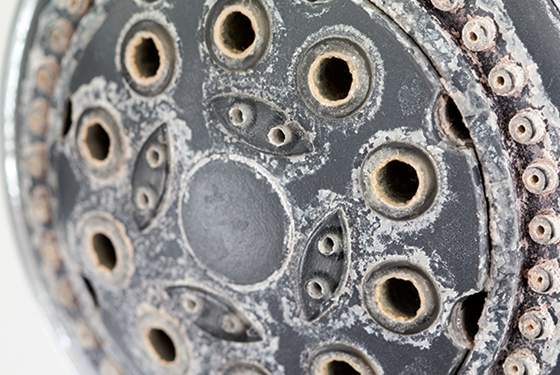
Hard Water
As water moves through soil and rock, it dissolves small amounts of naturally occurring minerals, specifically calcium and magnesium. These minerals make your water “hard,” which can be a nuisance throughout your home.
Most homes have hard water, whether it is supplied by a private well or a municipality. Unfortunately, many people mistake the telltale signs of hard water and blame the problems on inadequate cleaners and detergents or poor-performing appliances. Or they resign themselves to the fact that these problems are simply a way of life. In fact, many homeowners spend a significant amount of time, money and energy fighting the hard water battle. If you think your water is hard contact Kinetico to schedule a water test.
-
What to look for
Cloudy-looking glasses; spots on silverware; soap scum and bathtub rings; chalky, white scale on faucets and showerheads; stiff, dull and dingy laundry; dry skin and hair; soaps won’t lather; inefficient or poorly performing water heater; scale buildup inside water heater or pipes; shortened life expectancy of water-using appliances.
-
What to do
The most common and cost-effective way to soften water is to install a water softener. When hard water passes through the softening system’s resin bed, the calcium and magnesium (hardness) ions are removed through an ion exchange process, so only softened water passes through to your home. Once the resin bed fills up with hardness ions, it must be regenerated (cleaned). Salt is typically used in the regeneration process and restores the resin to a “clean” state so the ion exchange process can begin again.
-
Our solution
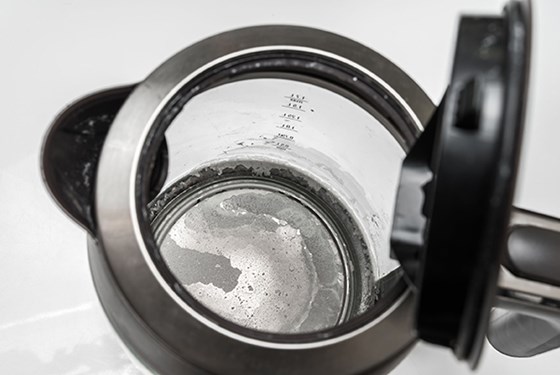
Cloudy Glasses
One of the most common causes of cloudy dishes and glassware is hard water. As water moves through soil and rock, it dissolves small amounts of naturally occurring minerals. These minerals make your water hard, which means it doesn't rinse as well as soft water, and can result in a film left on the dishes. The minerals in hard water can also dry onto the surface of glassware, creating a cloudy film.
-
What to look for
Cloudy or milky film covering the glass surface.
-
What to do
The most common and cost-effective way to soften water is to install a water softener. When hard water passes through the softening system’s resin bed, the calcium and magnesium (hardness) ions are removed through an ion exchange process, so only softened water passes through to your home. Once the resin bed fills up with hardness ions, it must be regenerated (cleaned). Salt is typically used in the regeneration process and restores the resin to a “clean” state so the ion exchange process can begin again.
-
Our solution

Bad Tastes & Odors
In its pristine state, water is colorless, tasteless and odorless. In fact, water that smells or tastes funny is the primary reason people turn to bottled water, which is expensive for you and harmful for the environment—millions of barrels of oil are used each year to produce and transport it and billions of plastic bottles are added to our landfills. So, if your water tastes or smells strange, you owe it to yourself to find out why.
-
What to look for
Water that has unpleasant or unusual tastes and odors. Your water has developed smells or tastes it did not have before.
-
What to do
The first step in determining what is causing the bad tastes and odors in our water is to have it tested directly at your home. A Kinetico Water Professional will perform a complete water analysis to define any and all of your water problems and recommend the best course of action for your home and budget.
-
Our solution
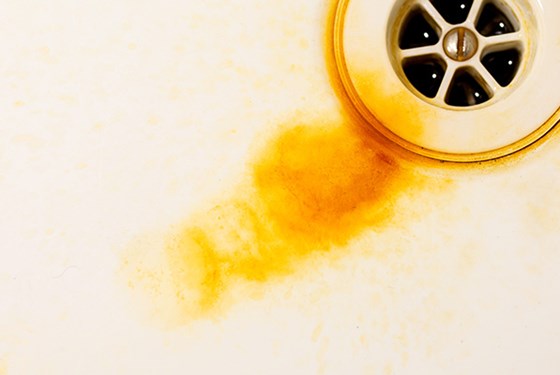
Orange or Reddish Stains
Water is a natural solvent and given the time and proper conditions, it will dissolve anything it comes in contact with. That's why, depending on where you live, your water can contain iron or manganese, which can cause rusty-orange or black staining. You'll see the stains on clothes, fixtures, sinks, tubs, water-using appliances and toilets. In fact, these stains can appear on anything your water comes in contact with. These minerals can even alter hair color! High iron levels are common with well water, but your city tap water could also have iron issues.
-
What to look for
Rusty stains in your toilets; white laundry is discolored; sinks and other fixtures develop red, orange, yellow, tan or rusty-colored stains; water looks dirty coming out of the tap.
-
What to do
A water test is necessary to determine what type of iron problem you are having. Ferrous iron (dissolved iron) is invisible in the water but leaves stains on clothing, fixtures, toilets and bathtubs. A drawn glass of water with ferrous iron left sitting may develop reddish-brown sediment at the bottom of the glass. That sediment is ferric (particulate) iron. Ferrous iron becomes ferric iron once it’s been exposed to oxygen. Ferrous iron and ferric iron require different methods of treatment.
-
Our solution

Bacteria & Viruses
According to the Centers for Disease Control and Prevention, there could be as many as 12 million cases of waterborne acute gastrointestinal illness annually in the United States alone. These illnesses are frequently caused by bacteria, viruses and protozoa that make their way into the water supply. And unfortunately, these contaminants can survive in the environment for months.
Even well-operated, state-of-the-art treatment plants cannot ensure that drinking water is entirely free of microbial pathogens. System failures do occur, and not all systems are functioning at the levels they should. And bottled water, which is unregulated and varies considerably, may not offer any more safeguards against pathogens than tap water.
-
What to look for
Gastrointestinal problems, such as nausea, diarrhea, cramps; headaches; urinary tract infections.
-
What to do
Homeowners must contact their local county or an EPA-certified lab to test for bacteria and viruses in their water supply.
-
Our solution
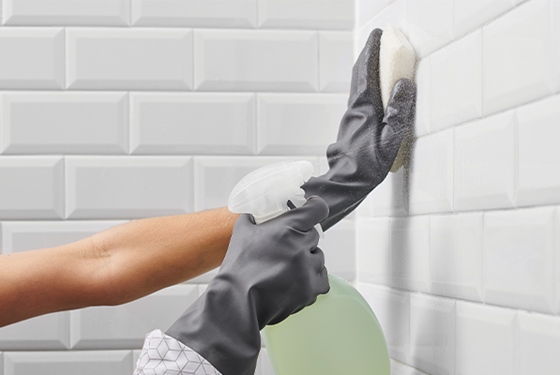
Soap Scum in Bath & Shower
Soap scum is a white or gray filmy layer that can be found on showers, bathtubs, sinks, shower curtains, bathroom fixtures and even laundry. Soap scum forms when minerals in hard water combine with soap and dirt to create a layer of scaliness. The “scum” is what’s left over after the water drains. Those with hard water are much more likely to have soap scum buildup. It can be difficult to remove if left for too long, as soap scum continues to build up with continued exposure to soap and water.
-
What to look for
White, gray, sticky or cloudy film in showers, bathtubs, sinks, shower curtains, bathroom fixtures and even laundry.
-
What to do
To end your battle with soap scum, you must first address your hard water issue. A water softener ensures you are getting soft water throughout your home, and prevents soap scum from ever forming. With soft water, your will never have to clean tough soap scum again!
-
Our solution
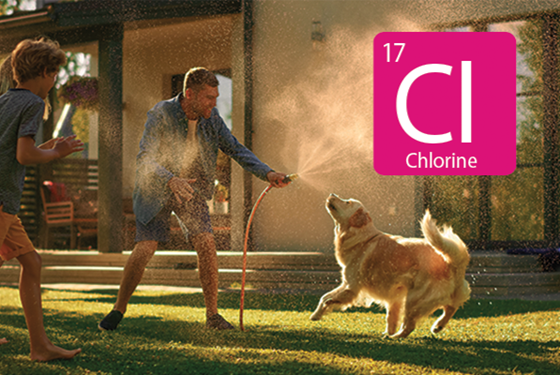
Chlorine Taste & Smell
Since the 1850s, chlorine has been used as a disinfectant to kill harmful bacteria in water itself or the pipes that transport it. It has helped end a number of major threats to public health. Although chlorine in water is essential at the treatment plant and in the water distribution system, it is no longer necessary once the water reaches your home.
While chlorine is vital for stopping the spread of disease, its benefits come at a price. Chlorine tastes and smells bad. It dries skin and hair, fades clothes (bleach is made of chlorine) and can dry out the rubber seals in appliances, shortening their lives.
-
What to look for
Chlorine taste and smell (“pool” smell), dried skin and hair, faded clothes, dried out rubber seals in appliances.
-
What to do
Many issues with excess chlorine can easily be solved with a drinking water filtration system, or a problem water filter designed for chlorine in your drinking water.
-
Our solution
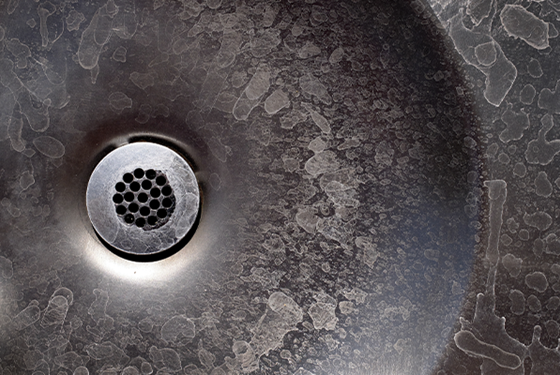
Chalky Scale on Fixtures
As water travels through the earth, it picks up minerals, like calcium and magnesium. When the water eventually enters your home and is heated, it forms a rock-like scale buildup. Scale is obvious on shower doors and fixtures, but it will also form in places you can’t see. Common problem areas include water pipes and hot-water-using appliances, such as your water heater and dishwasher. Homeowners frequently purchase expensive cleaners and chemicals to remove the scale, or chip away at it with sharp objects; however, they are often disappointed with the difficulty, expense and ineffectiveness of their efforts.
-
What to look for
Chalky or crusty white or green buildup on showerheads and faucets.
-
What to do
The most effective way to rid your home of scale buildup is to utilize a water softener. When hard water passes through the softening system’s resin bed, the calcium and magnesium (hardness) ions are removed through an ion exchange process, so only softened water passes through to your home. A water softener removes the problem-causing minerals before they can be distributed throughout your plumbing system.
-
Our solution
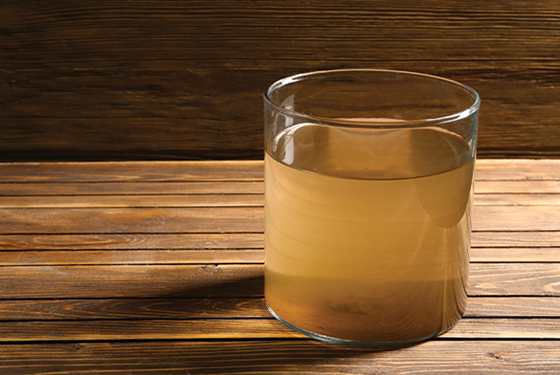
Turbidity (Cloudy Water)
Cloudy, murky or grayish water is usually caused by dissolved or suspended solids. This is also known as “turbidity.” Water can become turbid naturally or from land disturbances such as construction, storms and urban runoff.
The turbidity of your water can range from low to high. But even if your water looks clear, it could still contain a high level of dissolved solids. That’s why, whether your water is turbid or not, we recommend you have it tested.
-
What to look for
Cloudy, murky or grayish-colored water.
-
What to do
Because the level of turbidity in your water can vary greatly, even clear water can still have dissolved contaminants in it. That’s why Kinetico recommends getting your water tested. Our experts will determine if your water does have some contaminants, and offer a range options to help solve the problem.
-
Our solution

Chloramines
Many municipal water supplies have switched from chlorine to chloramines to disinfect and kill germs in drinking water. Chloramines are most commonly formed when ammonia is added to chlorine to treat drinking water. The use of chloramines is intended to provide longer-lasting water treatment as the water moves through pipes to your home.
-
What to look for
Chloramine has been shown to cause skin reactions and respiratory problems when consumed at higher levels. Chloramine in water can also cause lead to leach from pipes.
-
What to do
If your water contains chloramines for disinfection, Kinetico offers a variety of solutions to filter it before it enters your home’s water supply.
-
Our solution
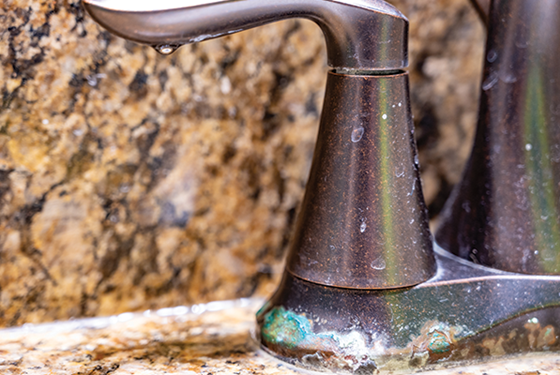
Blue-Green Staining
Blue-green stains in your sinks, tubs and showers are usually caused by having tap water that’s slightly acidic or corrosive. When low-pH water flows through copper pipes, it can cause certain metals (like copper and lead) to leach into your home’s water.
This water problem is compounded if you have hard water. High levels of copper can mix with the other hard-water minerals to create a multi-colored scale buildup.
-
What to look for
Blue or green staining on sinks, tubs and showers, toilets and even white clothing.
-
What to do
A Kinetico Water Professional may recommend a water softener to remove the hard-water minerals and help balance out your water’s pH levels. You can also opt for a more specialized system to remove other contaminants from your drinking water. A Kinetico Water Professional will perform a water test to diagnose your specific water issues.
-
Our solution
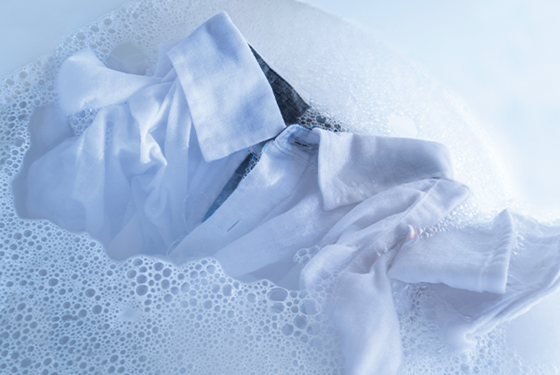
Stiff, Dingy Laundry
-
What to look for
Gray and dingy-looking laundry, stiff-feeling fabrics, weakening of fibers causing tears, white or gray streaks on colored fabrics.
-
What to do
The most common and cost-effective way to soften water is to install a water softener. When hard water passes through the softening system’s resin bed, the calcium and magnesium (hardness) ions are removed through an ion exchange process, so only softened water passes through to your home. A water softener removes the problem-causing minerals before they can be distributed throughout your plumbing system.
-
Our solution
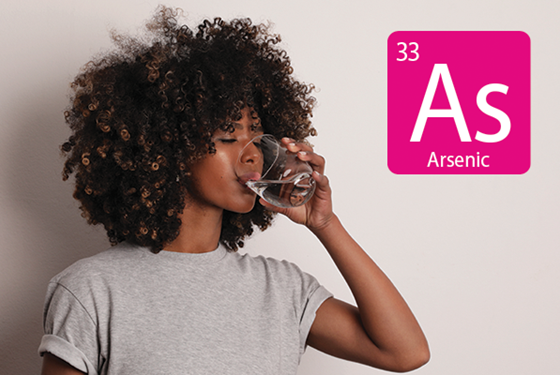
Arsenic
Arsenic is a naturally occurring metalloid element, commonly found in ground water. In drinking water, it is tasteless and odorless. Most people are alarmed when they learn that their drinking water, either from a public or private water system, may contain an amount of arsenic. According to the Centers for Disease Control and Prevention, arsenic can enter the water supply from natural deposits in the earth or from industrial and agricultural pollution.
-
What to look for
Arsenic in water is tasteless and odorless, so water must be tested to determine if the arsenic concentration is elevated.
-
What to do
Kinetico offers a variety of options for arsenic reduction. Because the threat from arsenic is primarily from drinking water, it is often most economical to treat only water used for drinking and cooking. However, some homeowners require more protection and may consider whole-house arsenic treatment. Homeowners must contact their local county or an EPA-certified lab to test for arsenic in their water supply.
-
Our solution
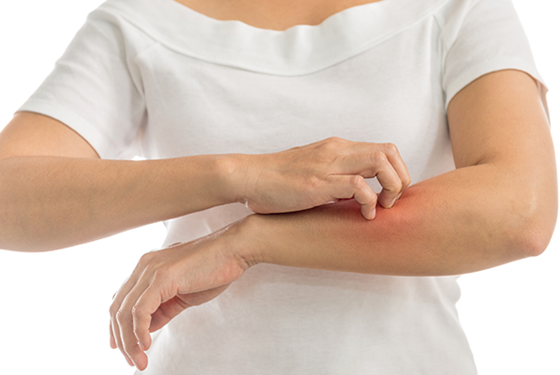
Dry Skin & Dull Hair
The dissolved minerals in hard water can prevent soaps and shampoos from lathering fully and rinsing away completely, leaving a film on your skin and hair. After washing your hair so many times, the build up of leftover minerals can create a film, which can cause your hair to become dry or damaged. Chemicals used to disinfect water supplies, such as chlorine, can also dry your skin and hair.
-
What to look for
Dry, itchy or red skin; dry, brittle hair.
-
What to do
Kinetico offers a full line of state-of-the-art water softeners and specialty filters to ensure you have nothing but clean, soft water flowing throughout your home. When you experience life hydrated by Kinetico, you will notice an immediate difference, and you hair and skin will welcome the change! And, soft water often allows people to stop purchasing lotions to counter the effects of dry skin caused by hard water.
-
Our solution
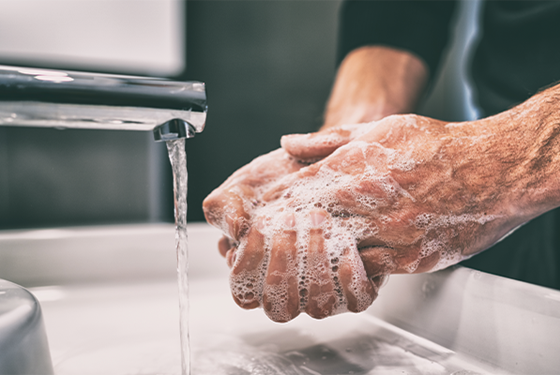
Soap Doesn't Lather
When soap is combined with hard water minerals, such as calcium and magnesium, it becomes more difficult for the soap to dissolve effectively and form a silky lather. As a result, people with hard water have to use more soaps and detergents to get the job done.
-
What to look for
Soap doesn’t lather; soap forms a gray, curd-like film; using more soaps and detergents during cleaning.
-
What to do
The most cost-effective way to soften water is to install a water softener. When hard water passes through the softening system’s resin bed, the calcium and magnesium (hardness) ions are removed through an ion exchange process, so only softened water passes through to your home. With soft water, soap quickly dissolves and forms a sudsy lather that easily rinses away. And, soft water requires less soap be used when washing.
-
Our solution
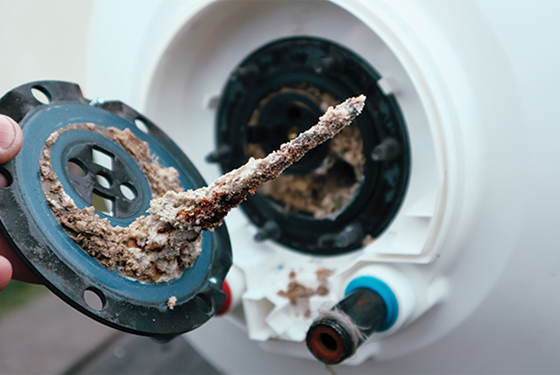
Poorly Performing Appliances
The minerals in hard water negatively affects your water-using appliances, such as hot water heaters, dishwashers and washing machines. Hard water can create a buildup of mineral deposits within appliances, constricting water flow and reducing their anticipated lifespan
Hot water heaters consume significantly more energy when operating on hard water. The calcium and magnesium found in hard water forms a rock-like scale when heated. The mineral buildup is a poor conductor of heat and causes the water heater to use greater amounts of energy to treat the same amount of water.
-
What to look for
Mineral deposit build up in appliances and pipes, increased energy bills, poorly performing appliances, white or cloudy film in appliances.
-
What to do
The most common and cost-effective way to treat hard water is to install a water softener. When hard water passes through the softening system’s resin bed, the calcium and magnesium (hardness) ions are removed through an ion exchange process, so only softened water passes through to your home. Once the resin bed fills up with hardness ions, it must be regenerated (cleaned). Salt is typically used in the regeneration process and restores the resin to a “clean” state so the ion exchange process can begin again.
-
Our solution
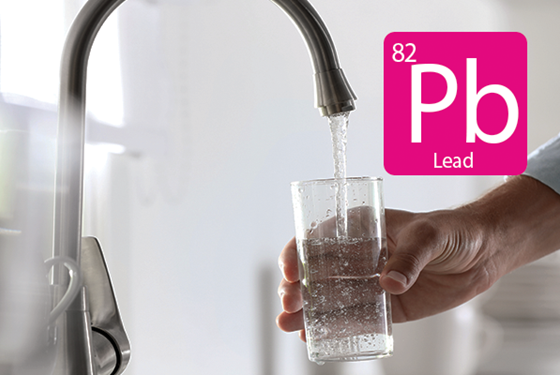
Lead
The heavy metal, lead, has been a topic of great concern for the water industry in recent years. First we heard about the impact of lead in Flint, Michigan and Newark, New Jersey. Now it is affecting some parts of Northeast Ohio. Lead does not naturally occur in water, but it can get into water supplies via lead water supply lines. Lead water supply lines can exist as part of your communities water infrastructure. Your home may also have lead water pipes if it is an older home.
When lead is present in a water supply it can lead to overexposure through drinking and everyday tasks like bathing and washing dishes. Overexposure to lead can lead to lead poisoning which can cause health issues for the nervous system.
-
What to Look For
Lead has no taste, smell or color in drinking water, so it is difficult to detect. You can contact your municipal water supplier to find out if there are lead water lines that supply water to your home. If your home is older, you should also find out if your home has lead water lines inside it.
-
Our Solutions

